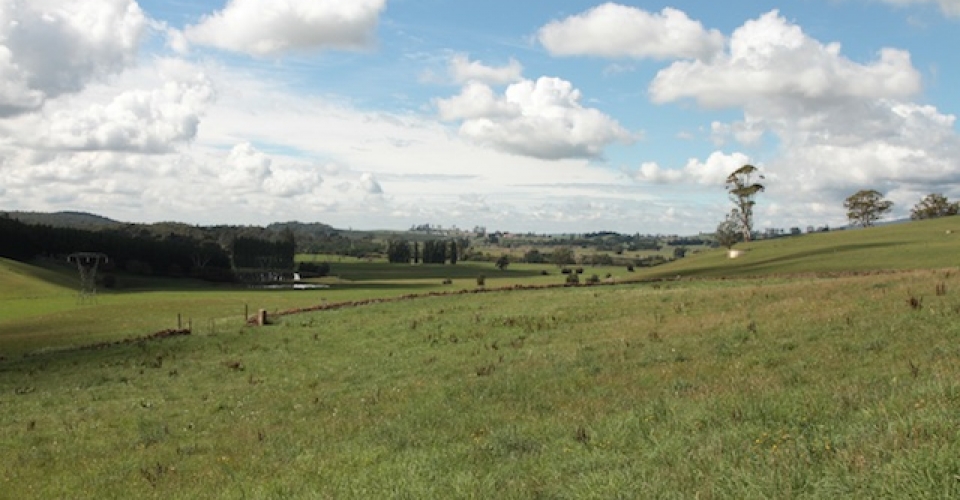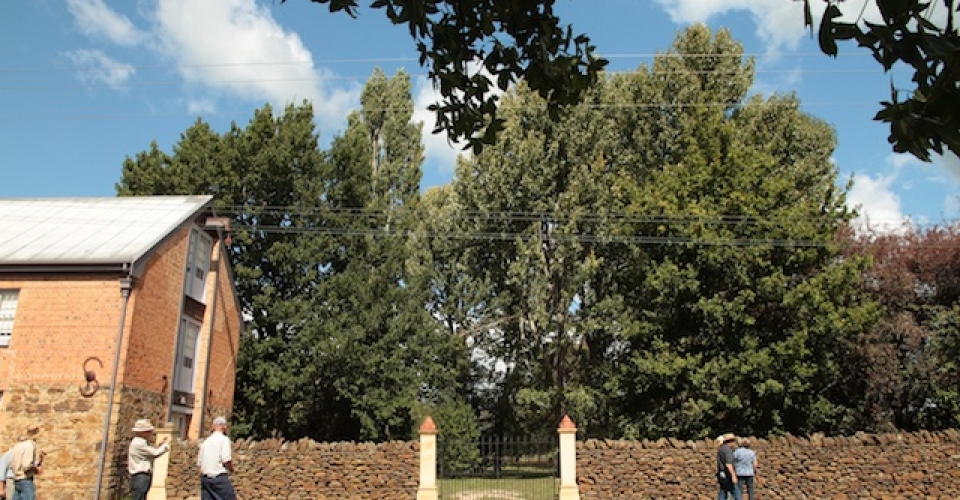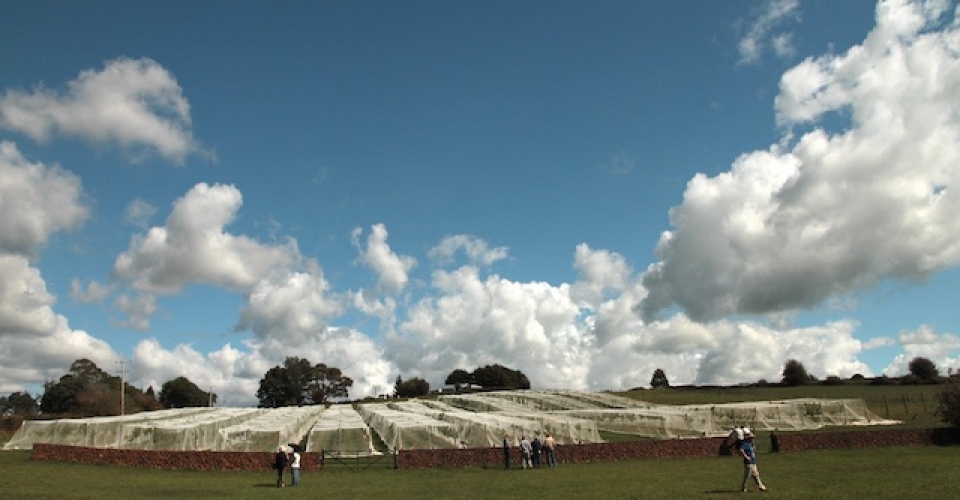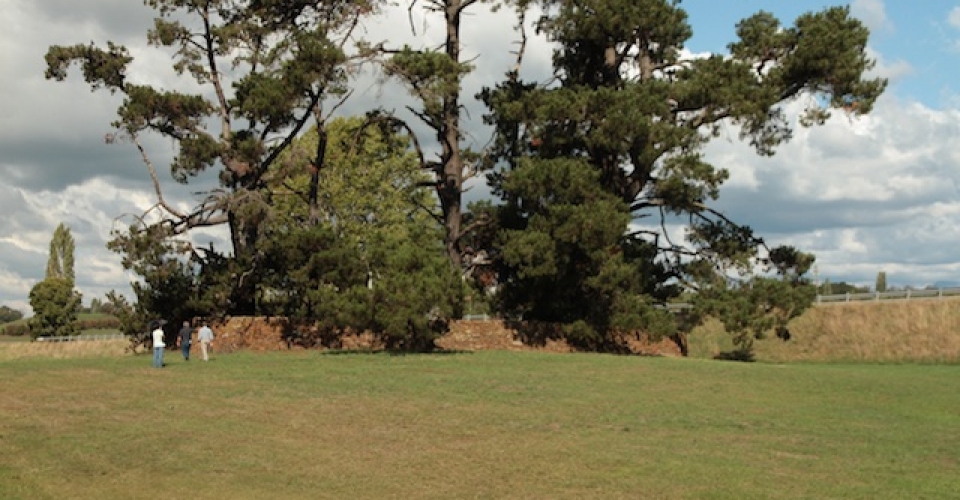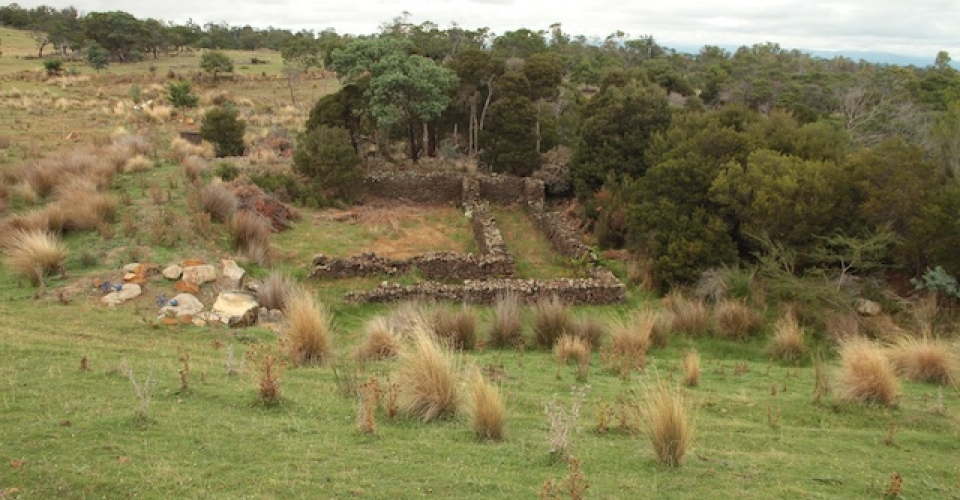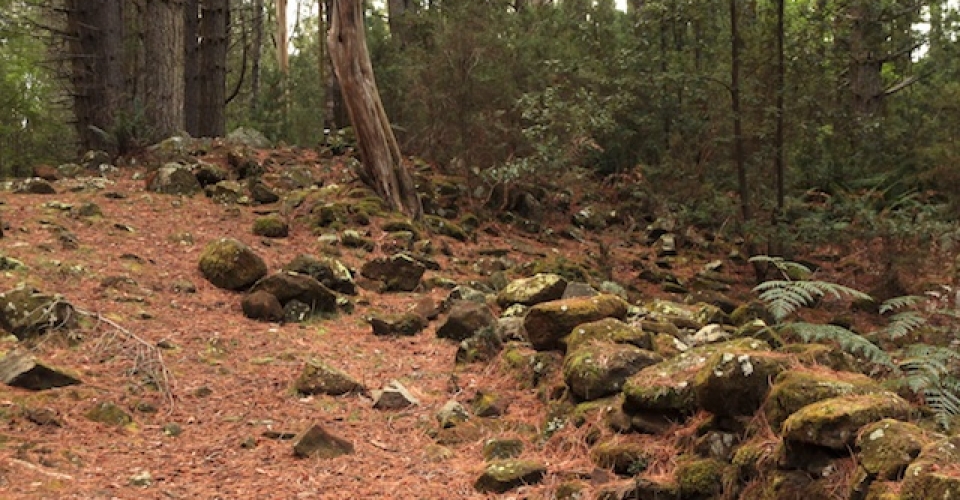This DSWAA field trip to Northern Tasmania was generously organised by Andrew Garner and James Boxhall. Here are some of the marvellous and diverse dry stone structures we saw.
Meander School wall
A 60M long drystone wall along the front of the school. It was built in the summer of 2008-9 by local wallers, Andrew Garner and James Boxhill using locally sourced creamy-grey-pink Triassic Sandstone. The stone is variable in texture and colour and contains some plant fossils, indicating fresh water deposition. The wall is low (<1M) for safety reasons; so children won’t be hurt falling off and passing traffic can see children behind the wall. Copestones are arranged in a “Cock and Hen” pattern and mortared on for added security.
The summer during the build set State temperature records, hitting 41 deg.C one day with Andrew suffering a burst calf vein and chisels were too hot to touch without gloves! Adding to the challenge, base stones for the wall had to bridge several large tree roots from the century old London Plane and English Oak trees. Some of the largest stones used at the wall ends were split down into smaller slabs using traditional ‘feather and wedge’.
Bonney’s Farm, Deloraine
An important remnant of 19thC farm walls of the area, these featured on ABC TV’s Landline in 2015. The walls are made of tertiary basalt which produces the rich red loam soils favoured by agriculture and were built by several generations of local wallers. The Bonney family was amongst the very first in the district, owning the farm from the 1830’s to recently.
The walls enclose several 4-10 acre paddocks, retain creek banks and traverse some steep hills. The wallers:
- “Chipper” Lovegrove who is responsible for the impressively long and steep walls (dates unknown)
- Vic Cohen who built many of the smaller paddock walls during the 1930s and 1950s
- Jim Bonney carted stone for Vic and built retaining walls along the creek. He said Vic could build up to 5M/day and never had a bad back!
Some wall sections require repair from young cattle knocking top stones down, exposing the heart of the walls which subsequently ‘fray’.
“Bentley” roadside walls, Chudleigh
Known as the ‘Village of Roses’, Chudleigh has been transformed over the past decade due to the combined effort of local residents, businesses and Council. Owners of “Bentley”, purchased and restored several properties to their former glory, including this 1827 stone and brick Van Diemans Land Co grain store at the edge of the village. Completely restored and flanked by high DSW, it now serves as guest accommodation and farm gatehouse.
The walls are of local basalt, built in stages between 2006-8; the only publicly visible walls on the property which total some 600M! Remarkably, one of the men who built them was “One-legged John” Wilson, a strong, proud and inspirational Deloraine resident who lost a leg to cancer in his 20’s. Sitting on a milk crate, he used a long-handled hoe to drag stone nearer and the handle of his crutch to balance while he placed the stone into the wall.
3-Willows Vineyard
This neat basalt dry stone wall was built at the base of the vineyard with fieldstone sourced from the hill top above. It was built in stages by Andrew Garner 2008-9. There is no livestock on the property so copestones are absent, however, through stones are present, seen projecting on the uphill side only.
The boutique vineyard and winery was planted in 2002 and offers Pinot Noir, Pinot Gris, Chardonnay and the rare Baco Noir.
Bowerbank
Originally part of the 1000 acre Bowerbank Estate, this 200M long section of dry stone wall is split by the Bass Highway. The exact age is uncertain but a Tasmanian Heritage Council report suggests it and the circular sheepfold and other nearby walls on private property may date to the 1840’s.
The long straight section is flanked by European trees and unique with its distinctive row of large stones set on edge along the middle of the wall. This feature has been referred to as the ‘boulder line’, not known to exist elsewhere in Tasmania.
Meander Rise
Meander Rise is a property of ~5000 acres of mixed grazing and cropping with tracts of land formerly belonging to the neighbouring historic Springlands and Entally. There are numerous dry stone walls on the property but of particular interest and significance is the dry stone wall sheep wash complex on Springlands Creek, thought to date from the 1850s. Wool growers constructed these races and plunge pools partly to get better prices for wool that was washed and partly in response to scab – a mange mite – that was very prevalent. The Scab Act of 1870 compelled landowners to treat their flocks and sheep were dipped in Tobacco Wash – a combination of caustic soda, sulphur and boiled tobacco leaves. By 1881 the state was declared free of scab!
Hollybank
Now a peaceful reserve managed by Forestry Tasmania for public education and recreation, Hollybank was first purchased in the 1850s when the dense straight eucalypts present were cut down to supply timber for the Victorian gold rushes then sold in 1886 to William Orr. The Orr family build most of the dry stone walls on the road leading to and within the reserve. Although many of the walls have fallen into disrepair, some sections show a distinctive style of construction, best described as ‘half-single’. This Scottish form has the lower half of the wall built with 2 ‘skins’ of smaller stones, capped off by a single layer of massive stones or boulders that bind the wall together.


